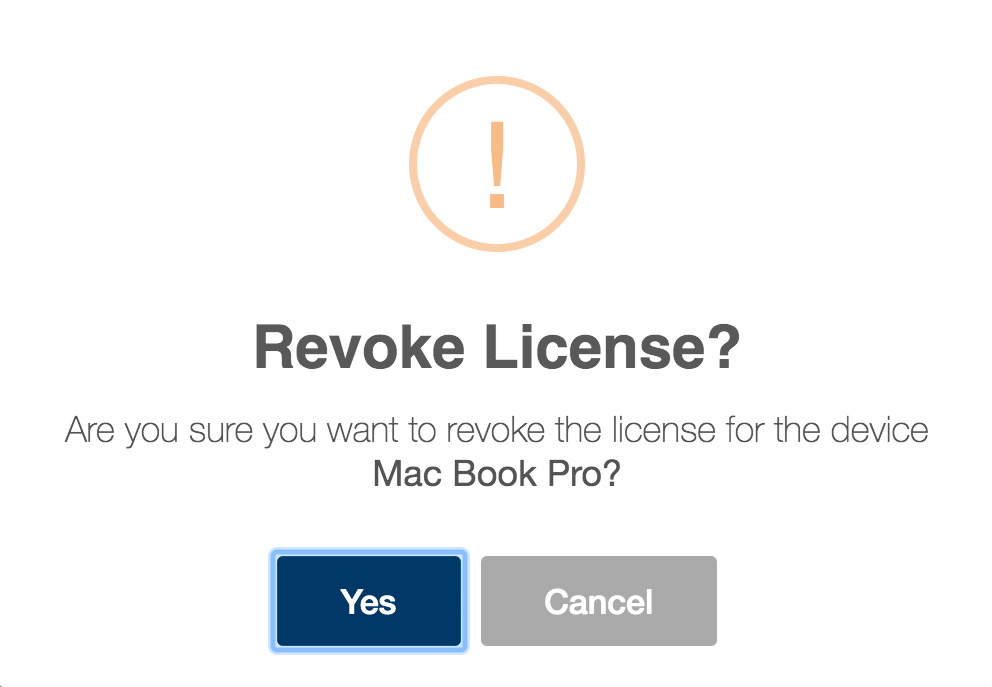FAQs
Device Enrollment and Registration FAQs
Do I need to install an anti-virus solution if I don’t have one?
You must install and regularly update anti-virus software and personal firewall software on any personal computer you use to connect with MyDesk.
Windows Defender by Microsoft is built-in, free, and easy to use on Windows 8 and Windows 10. Other options (free and paid) are available from wide range of providers, some of which are listed below:
| Company | Website | Windows | Mac | Free Versions | |
|---|---|---|---|---|---|
| AVG | www.avg.com | 10 only* | ✔ | ✔ | |
| Avira | www.avira.com | ✔ | ✔ | ✔ | |
| Bitdefender | www.bitdefender.com | ✔ | ✔ | ✔ | |
| Malwarebytes | www.malwarebytes.com | ✔ | ✔ | ✔ | |
| McAfee | www.mcafee.com | ✔ | ✔ | ||
| Norton | www.norton.com | ✔ | ✔ |
*AVG on Windows 7 and 8 is not compatibile and may cause issues when launching MyDesk Shield.
Why do I need to update my anti-virus solution before installing MyDesk Shield?
Your anti-virus needs to be updated to ensure compatibility with the installation of MyDesk Shield. Failure to do so may result in a failed installation.
What are the supported operating systems?
MyDesk Shield is supported on following operating systems:
- Windows 10, 8.1, 8 and 7.
- Apple macOS High Sierra (10.13.x) and Sierra (10.12.6).
What is installed with MyDesk Shield bundle?
As part of MyDesk Shield bundle you will install the Citrix Receiver, the Smart Card Drivers, and MyDesk Shield browser. Once you have installed the package and rebooted, you will be ready to connect.
Will MyDesk Shield slow down my personal computer use?
MyDesk Shield will have no recognizable impact on your personal home computer. Resources on your personal computer are only used when you are in a MyDesk session.
How do I switch between MyDesk Shield and my personal desktop session?
Move your mouse to the top of the screen to bring down the Desktop Viewer toolbar, click ‘Home’ to return to your personal desktop. Then click ‘Desktop Viewer’ icon from the task bar to return to your MyDesk desktop session.
Icons and screen resolution in MyDesk Shield appear small and distorted, how can I make them larger and clearer?
Switch to your personal desktop and set screen resolution settings to 1280 x 768.
What do I do if I have forgotten or lost my Smart Card or RSA token?
If you do not have your smart card or RSA token please contact End User Support Services to enable you to login with temporary password and click here to access the breakglass device registration login page.
What do I need to do to update MyDesk Shield?
MyDesk Shield will automatically download updates when available and once installed you may be prompted with a message asking you to reboot your computer, at that time you will have 3 grace launches of MyDesk Shield before you have to reboot to complete the update installation.
How do I check the reliability of my internet connection?
Click the icon below to access the Speed Test, which will open in a new window. Click GO to start the test. Make note of your test results, and return to this page.
Speed Test
Note: The Speed Test performs generic internet connection tests from your device. It does not evaluate the network condition for the connection to Credit Suisse infrastructure.
What does the "Ping" speed test result mean?
Ping relates to network latency. The quality of your MyDesk experience is defined by the latency of the network connection. With poor Ping results, you may experience slow responsiveness between your home machine and Credit Suisse iDesktop, i.e. you may see delays in mouse movements and keystrokes.
The chart below categorizes the quality of your internet based on the ping results.
| Speed Test Results Chart | |||
|---|---|---|---|
| Good | Fair | Poor | |
| Ping (ms) | Below 20 | 20-120 | Above 120 |
What does the "Download" result mean?
The quality of your MyDesk experience can be significantly impacted by the download speed. This indicates how quickly content is transferred to your computer over the internet. A poor download speed will have a direct impact on the quality of your MyDesk experience, especially audio and video content.
The chart below outlines the quality of your internet based on your download speed results.
| Speed Test Results Chart | |||
|---|---|---|---|
| Good | Fair | Poor | |
| Download (Mbps) | 10+ | 5-9 | Below 5 |
What does the "Upload" result mean?
Upload speed indicates how quickly data is transmitted from your computer to the internet. Poor upload speed will have a direct impact on the quality of your MyDesk experience. You may see poor responsiveness of mouse movements and keystrokes. You may also transmit poor audio and video quality during Skype sessions.
The chart below outlines the quality of your internet based on your upload speed results.
| Speed Test Results Chart | |||
|---|---|---|---|
| Good | Fair | Poor | |
| Upload (Mbps) | 3+ | 3-1 | Below 1 |
Note: Please do not be alarmed if your upload speed value is much lower than your download speed, this is an expected result.
What sort of MyDesk experience can I expect based on the overall test results?
Below is an outline of what sort of MyDesk experience you can expect based on the overall speed test results.
Good: Your network conditions for connecting are good, and should support a stable and responsive MyDesk session along with a good Skype audio experience.
Fair: Results in this range will provide you with a fair MyDesk experience, but Skype audio call quality may be poor and you could experience some disruptions.
Poor: You don’t have the bandwidth to support a MyDesk session.
What can I do?
- Move your computer closer to the internet router
- Restart your ISP router
- Evaluate the number of concurrently connected devices to a single home router – consider purchasing another access point/router for load balancing
- Connect your computer directly to your internet router using an Ethernet cable
- Enhance your home network with the aid of powerline adapters
- Contact your ISP to troubleshoot network connection provided against hardware issue, cord failure or ISP connection damage.
- Contact your internet service provider to upgrade your service to a higher download speed.
- Consider choosing alternate connections : separate ISP, 4G cellular connection, WiMAX
What do the other speed test results mean?
- Jitter – Measures stability of your connection. The lower the Jitter (ms) value, the more stable your internet connection will be.
User Guides
NOTE: MyDesk Shield is supported on the following operating systems:
- Windows 10, 8.1, 8 and 7.
- Apple macOS Mojave (10.14), High Sierra (10.13), Sierra (10.12).
-
On your personal device, open an internet browser and navigate to https://mydeskshield.credit-suisse.com
-
You will be directed to the MyDesk Shield Device Enrollment page. Select your home region and your authentication method: either physical Smart Card or RSA Token. (Note: Apple macOS users can only select RSA Token)
Smart Card: Select Smart Card option and click ‘Log On’. Enter your Smart Card PIN when prompted and click ‘OK’ to log in.
RSA Token: Select RSA Token option and click ‘Next’. Enter your Username, RSA PIN and RSA Token code (either from your physical RSA Token or RSA Token mobile application), then click the ‘Log On’ button to log in.
-
Register your device by entering a descriptive device label and clicking the ‘Register’ button. Once your device is registered, the ‘Download’ and ‘Un-Register’ buttons will appear.
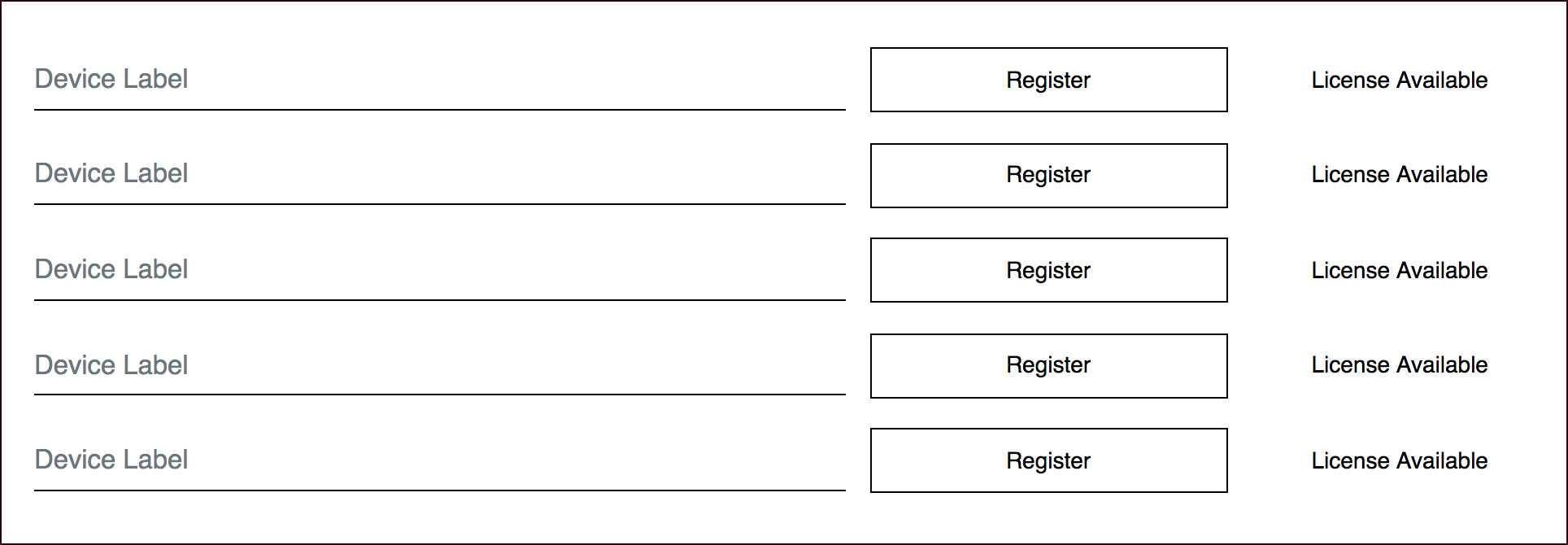
-
Click the ‘Download’ button to download MyDesk Shield to your registered device. Please note you may register a maximum of 5 devices for use with MyDesk Shield. If you need to un-register a device, refer to ‘Un-Register MyDesk Shield device registration license’ instructions.
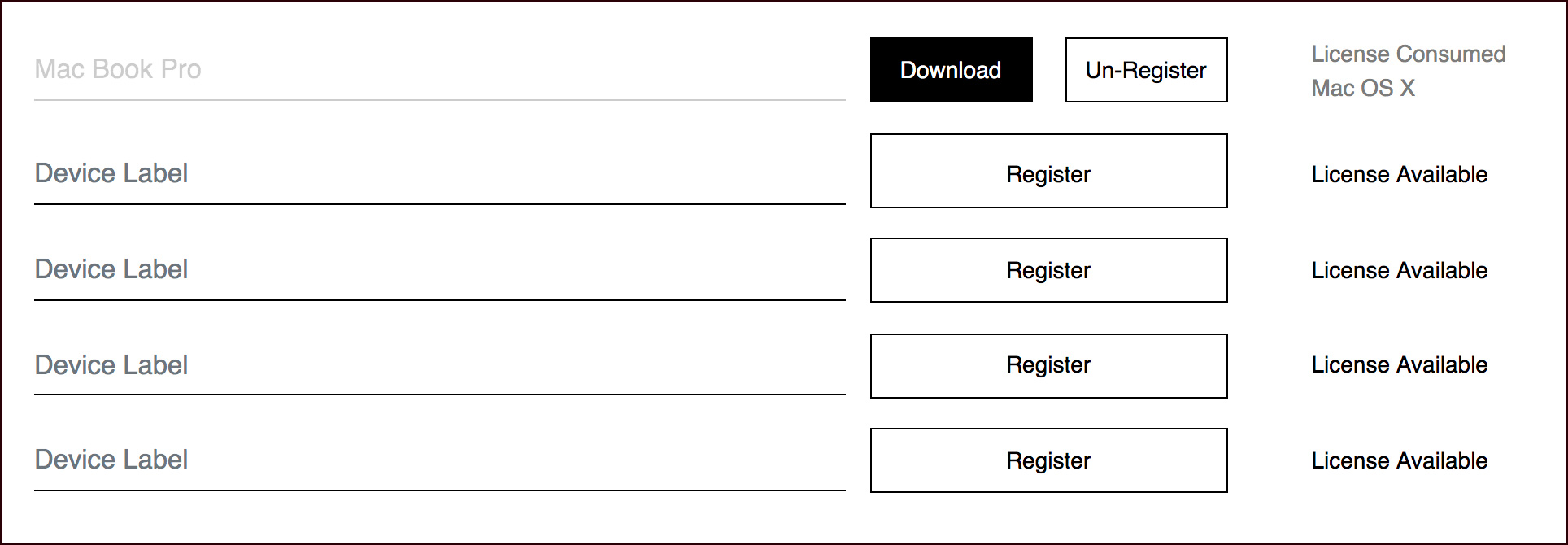
-
Once you've downloaded the MyDesk Shield Application, launch the package, select 'yes' if prompted with a message to allow the application to make changes to your device and select the default options throughout the installation wizard.
Note: A reboot is required after installation
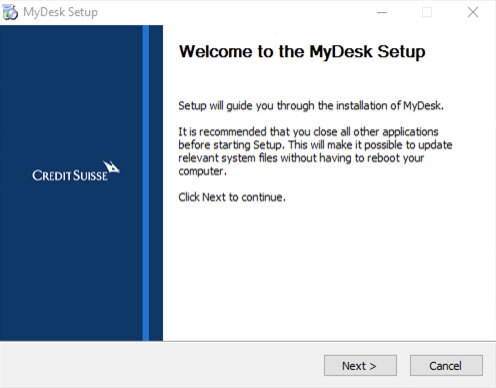
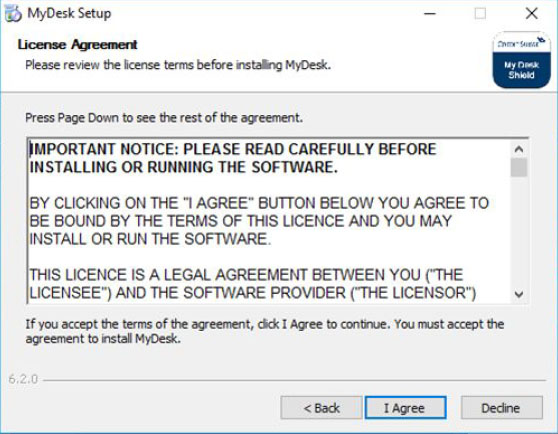

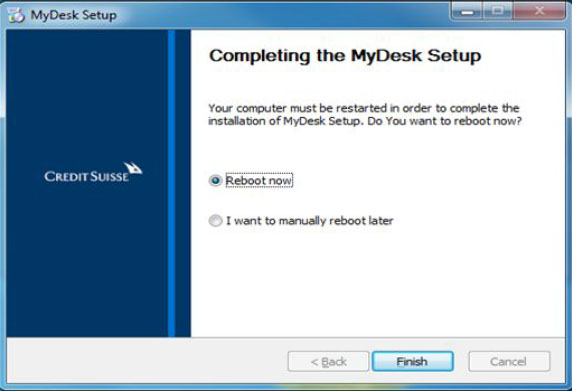
-
Open MyDesk Shield via desktop icon to login.
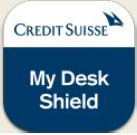
-
Once you've downloaded the MyDesk Shield Application, double click on the MyDesk.pkg from your Downloads folder to start the installation.
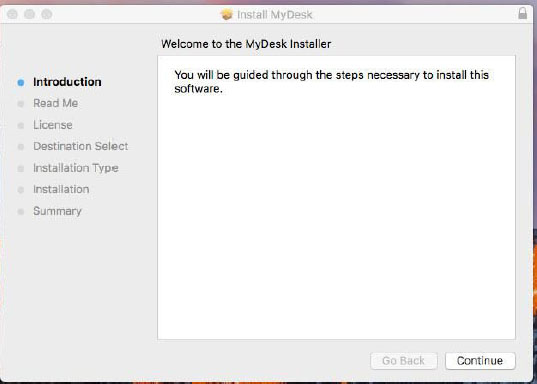


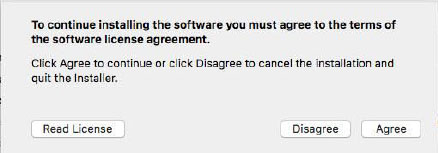
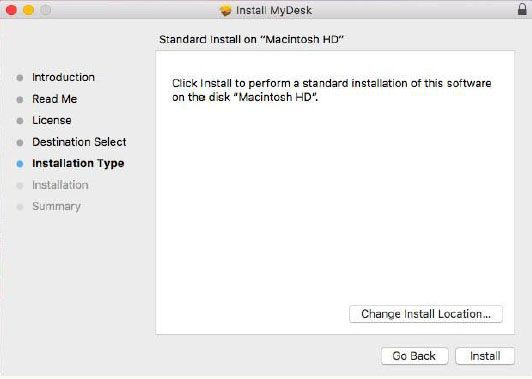
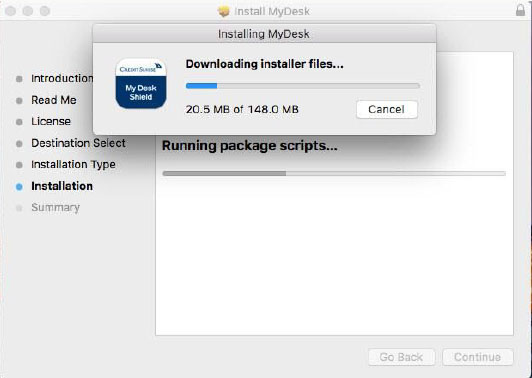
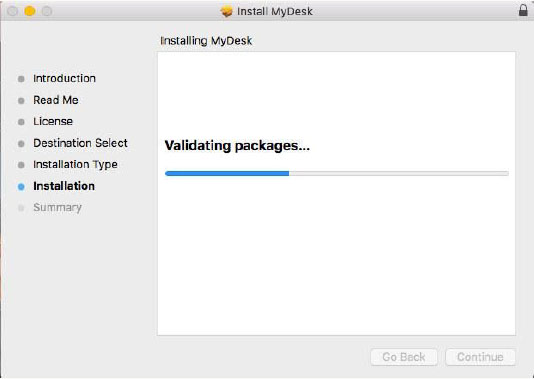

-
Open MyDesk Shield via the icon in your Launchpad (easily accessible by pressing F4 key on your keyboard).
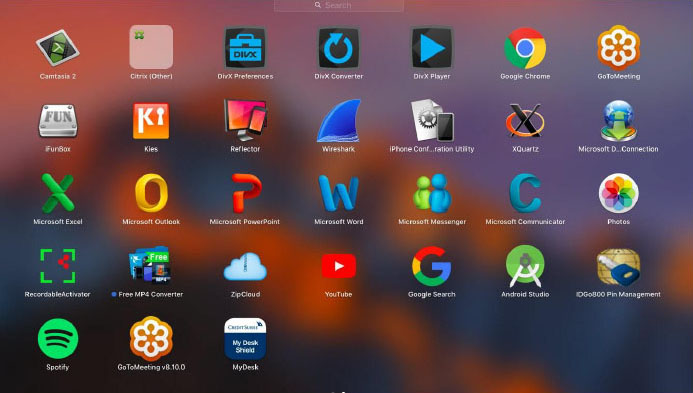
-
Launch MyDesk Shield from the MyDesk icon on your desktop. If you're using a Mac, the icon will be in your Launchpad (easily accessible by pressing F4 key on your keyboard). You can create a shortcut on your desktop.
-
Select appropriate region and Smart Card as authentication type and ensure tick box is ticked verifying you have installed and regularly update Anti-Virus Software on your computer.
NOTE: You may see alerts or announcements at the bottom of the login page. You can dismiss them by clicking the 'x'.
-
Click Log On.
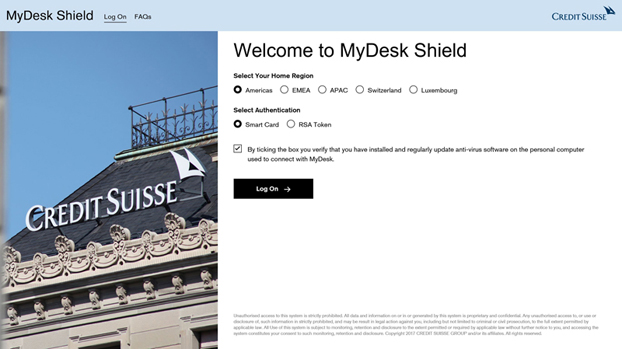
- Enter pin for Smart Card.
-
You will be directed to MyDesk 'Desktops' page.

- Click on your Desktop icon and log on as normal.
- Launch MyDesk Shield from your MyDesk icon on your desktop. If you're using a Mac, the icon will be in your Launchpad (easily accessible by pressing F4 key on your keyboard).
-
Select appropriate region, RSA as authentication type, enter RSA details and ensure tick box is ticked verifying you have installed and regularly update Anti-Virus Software on your computer.
NOTE: You may see alerts or announcements at the bottom of the login page. You can dismiss them by clicking the 'x'.
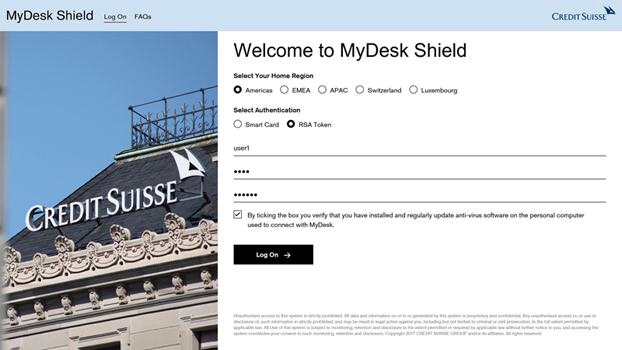
-
You will be directed to MyDesk 'Desktops' page.

- Click on your Desktop icon and log on as normal.
Windows – Follow the steps outlined below to uninstall MyDesk Shield from your windows computer.
- Open Control Panel.
- Within ‘Control Panel’ window click on Programs > Programs and Features.
- Then select ‘MyDesk’ and click ‘Uninstall/Install’ option.
- Click ‘Uninstall’ to the message to start uninstall of MyDesk Shield.
- Once uninstall has completed you can choose to restart your PC now or restart manually later.
Mac – Follow the steps outlined below to uninstall MyDesk Shield from your Mac computer.
- On your Mac computer open Finder, from menu click Go then Applications.
- Double click Uninstall MyDesk. If you are unable to find the uninstall file then you can download it from this link.
- Click Yes to Uninstall MyDesk message.
- If prompted, enter Username and Password and click ok.
- A Message will pop up stating 'MyDesk was uninstalled successfully'. Click OK.
-
Login to MyDesk Shield Device Enrollment page. From MyDesk Shield Device Registration page, click Un-Register button next to the device you wish to un-register.
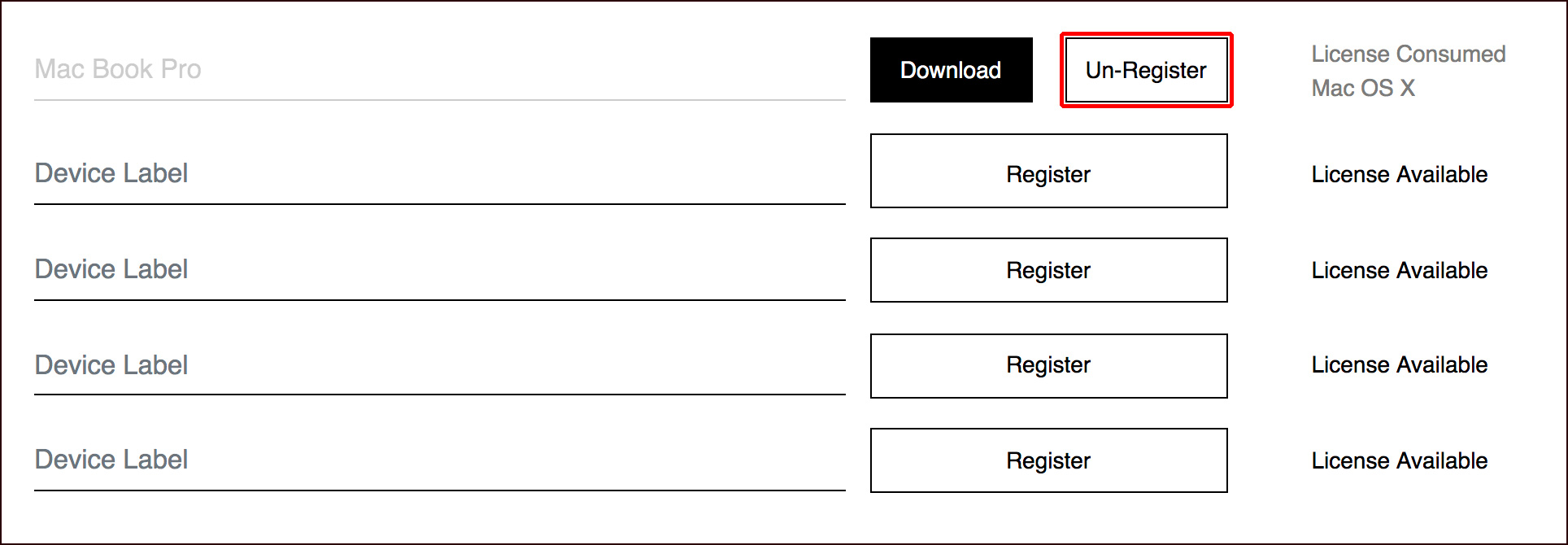
-
Click Yes to the message asking if you are sure you want to revoke the license for the specified device.
